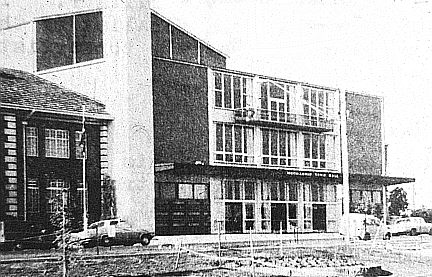
Back to Main Encylopaedia Contents
Town Hall, Moorabbin

The installation of the four-manual, twenty-one rank, Wurlitzer organ from Melbourne's State Theatre in the new Town Hall at Moorabbin is the result of a successful collaborative relationship between Moorabbin City Council, the owner of the instrument, and the Victorian Division of the Theatre Organ Society of Australia, who undertook to install and maintain it.
Theatre organist Gordon Hamilton, who purchased the organ from the State
Theatre in 1963, indicated in 1967 that he would consider selling it to a buyer
who could ensure that it would be installed in an environment which would
match its potential. In 1968, the City of Moorabbin purchased the instrument, on
the understanding that TOSA would install and maintain it in the Town Hall, which
was then under construction. [Official Opening Programme, Moorabbin Town Hall Organ, 29 April, 1970,
p. 9.] Although the chambers were not yet constructed, the large relay units were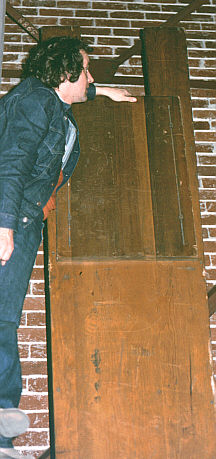 the first part of the organ to be set up in the Town Hall on
8 September, 1968. A month later, the largest five
diaphone pipes were placed in their position backstage
so that the chambers could be constructed in front of
them. [Vox, October, 1968, p. 3] The largest of these huge pipes
weighs almost half a ton, and is 32' 8" high, its top being
2' 8" square. As more of the bulkier parts of the organ
were installed, the chambers were built around them.
[Official Opening Programme, Moorabbin Town Hall Organ, 29 April, 1970, p. 10]
On 6 July, 1969, by which time most of the pipes and the
console had been installed, the organ was heard for the
first time, and from then on the instrument began to find
its voice. [Vox, July, 1969, p. 3]
the first part of the organ to be set up in the Town Hall on
8 September, 1968. A month later, the largest five
diaphone pipes were placed in their position backstage
so that the chambers could be constructed in front of
them. [Vox, October, 1968, p. 3] The largest of these huge pipes
weighs almost half a ton, and is 32' 8" high, its top being
2' 8" square. As more of the bulkier parts of the organ
were installed, the chambers were built around them.
[Official Opening Programme, Moorabbin Town Hall Organ, 29 April, 1970, p. 10]
On 6 July, 1969, by which time most of the pipes and the
console had been installed, the organ was heard for the
first time, and from then on the instrument began to find
its voice. [Vox, July, 1969, p. 3]
The grand opening of the organ took place on Wednesday 29 April, 1970, with American organist Lyn Larsen, whose extended seasons as guest organist at the Dendy, Middle Brighton, over the past three years had won him an appreciateive following in Melbourne. The Mayor's short address included the information that the total cost to the City of the purchase and installation of the magnificent organ had been $21,374. The President of TOSA (Vic) Alastair Pritchard acknowledged the vast amount of voluntary work which had been devoted to the project by forty-two members under the dedicated leadership of Julien Arnold. [Vox, May, 1970, p. 3]
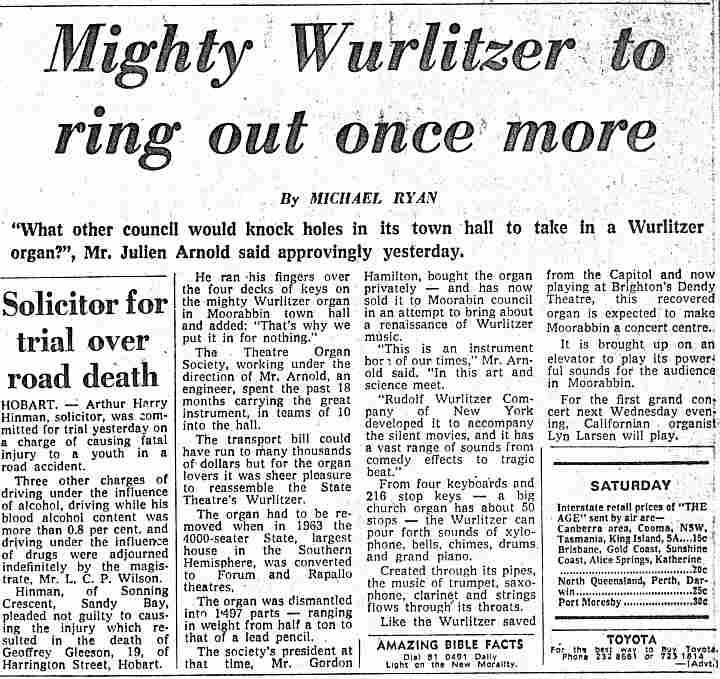
The Age - April, 1970
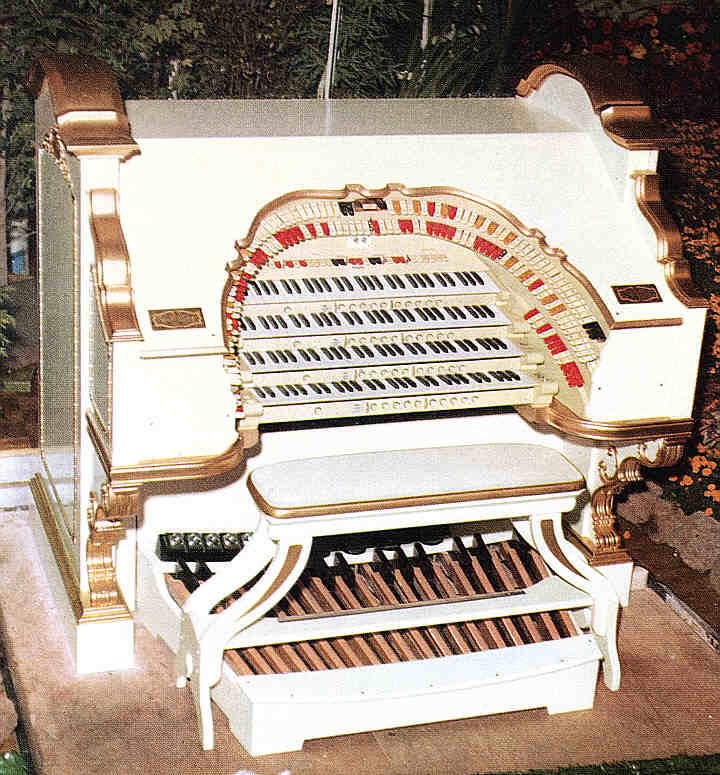
Photo: courtesy TOSA(Vic)
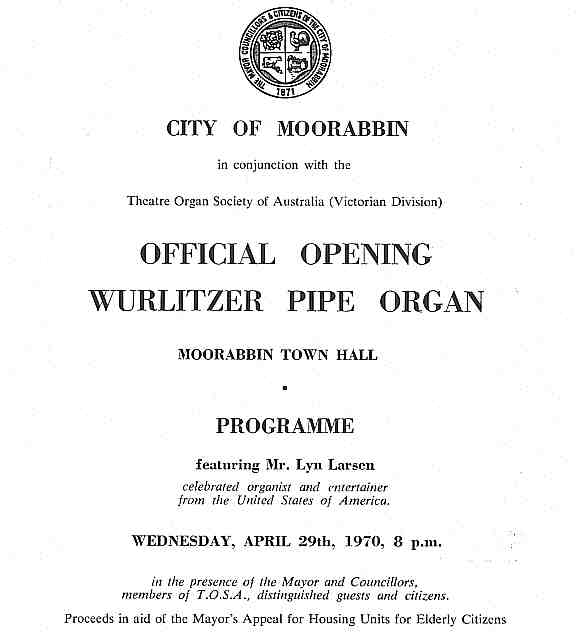
Lyn Larsen's programme, which was compèred by David McGee from radio station 3AW, was as follows:
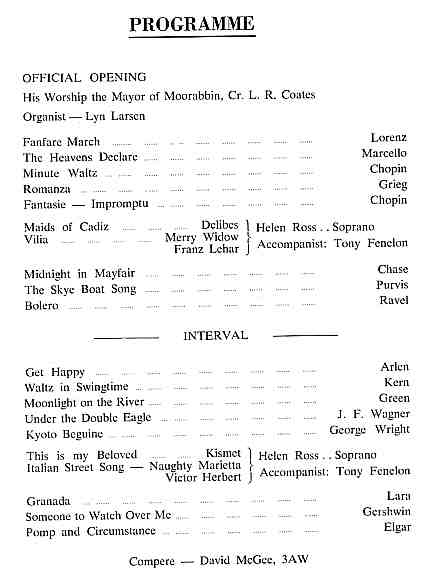
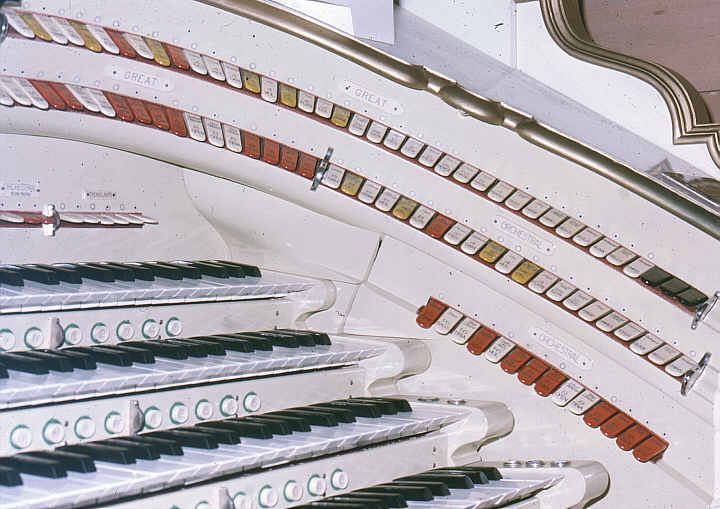

The organ chambers (main, solo and percussion) are above and behind the proscenium arch in the auditorium, with the grand piano attachment on stage and the organ console on a lift in front of the stage, on the left. The organ was installed with the same ranks and specification as it had at the State Theatre.
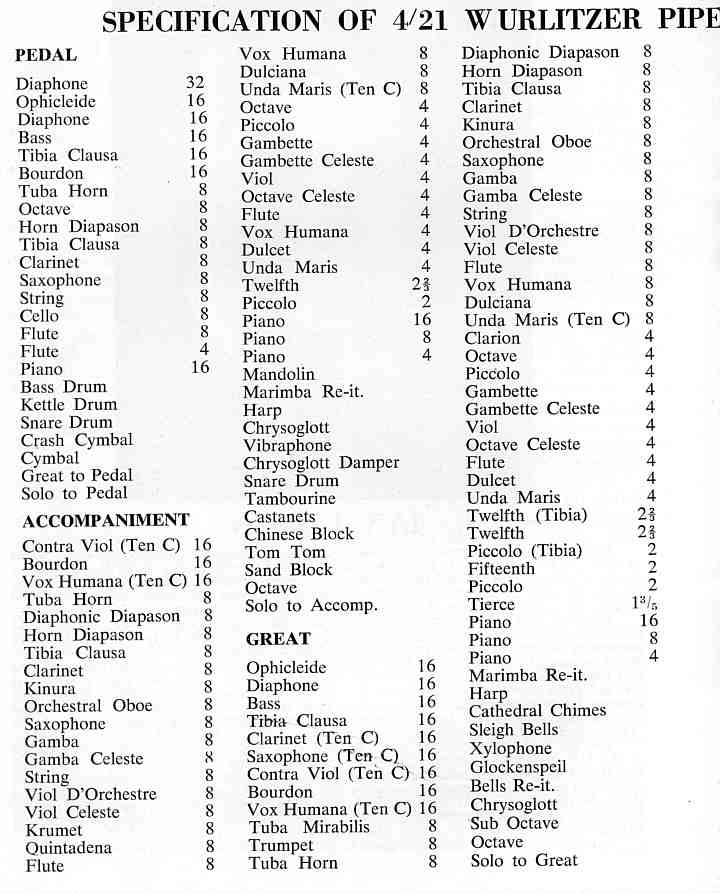
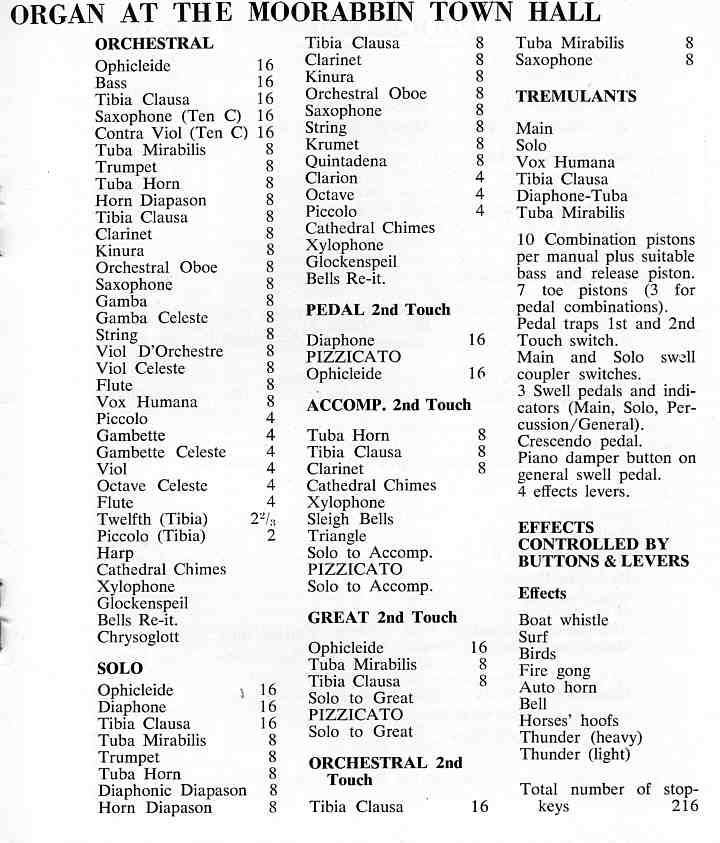
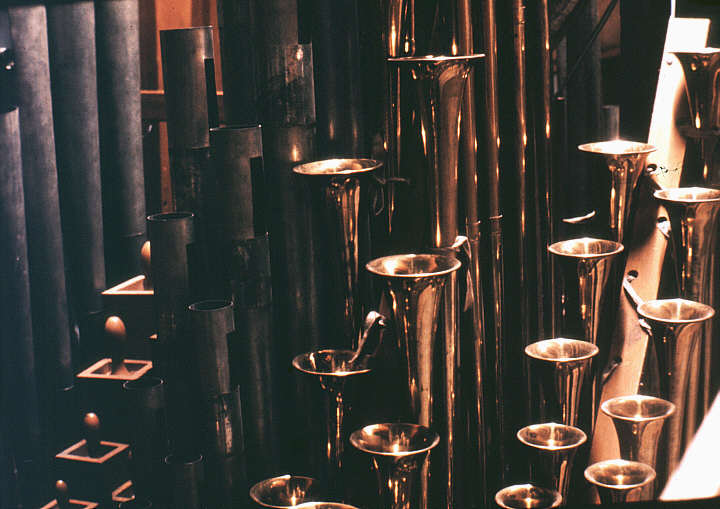
Above photo: John Thiele
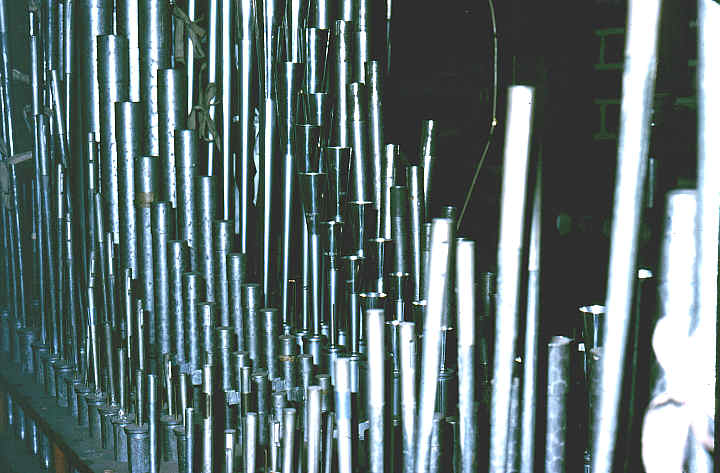
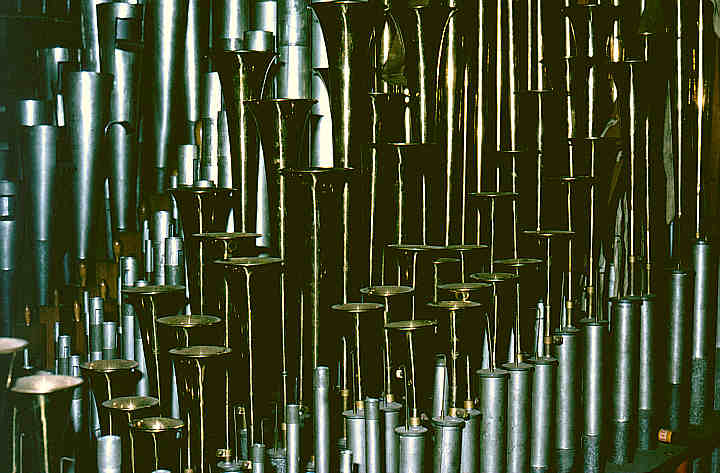
Above: Solo chamber
Below: Main chamber
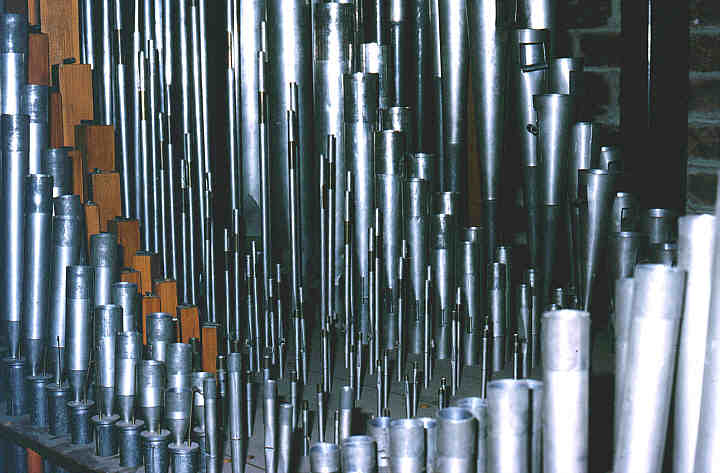
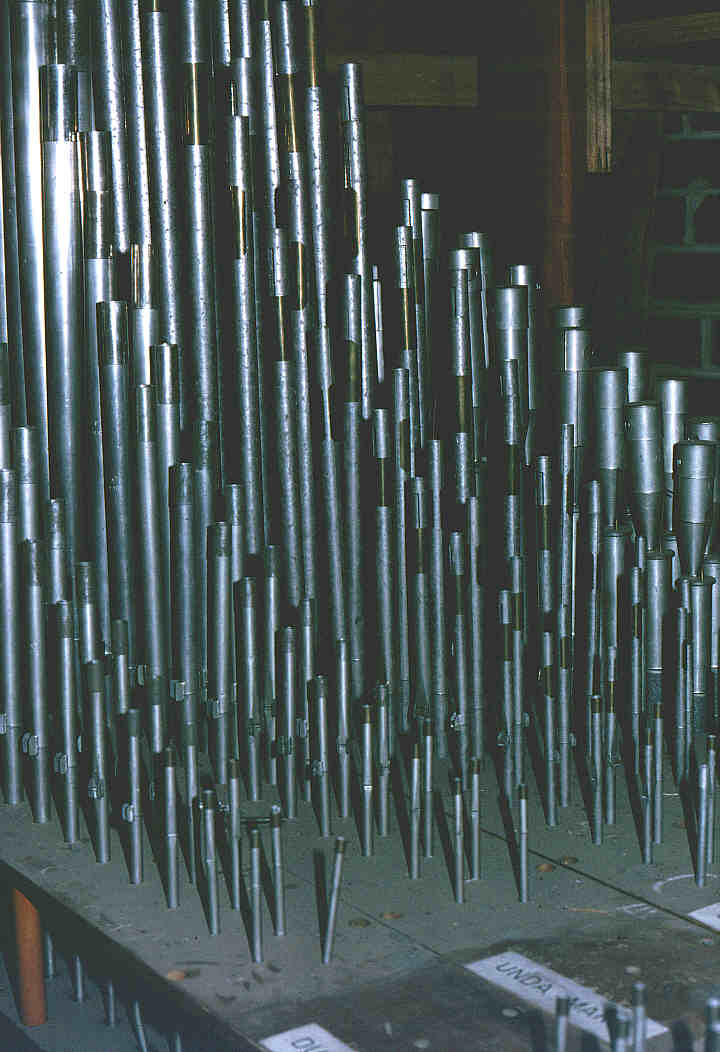
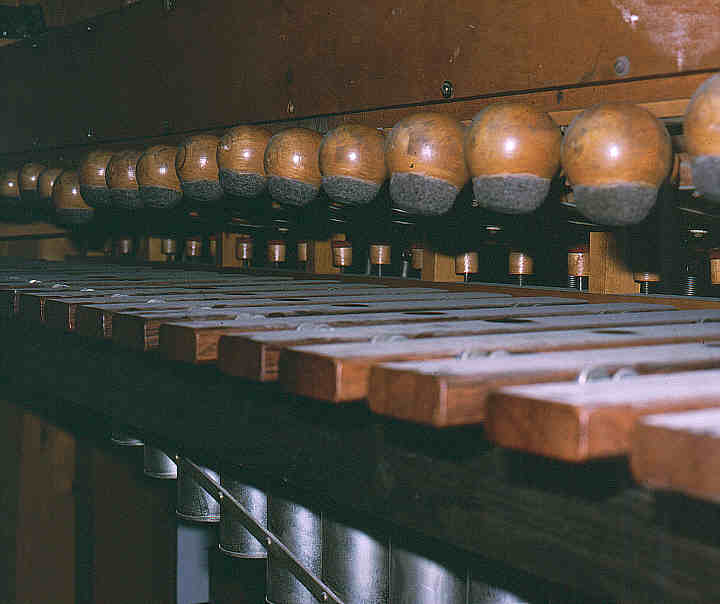
Marimba hammers and bars
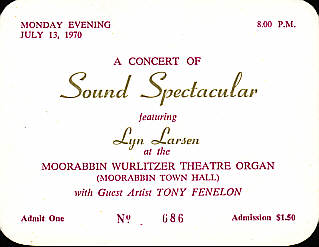
The Moorabbin organ received nationwide exposure some weeks after its inauguration, when David Johnston was seen at the console as he gave a brief demonstration of it for the television show "This Day Tonight". [Vox, July, 1970, p. 9] It was first heard on record when the LP "The Mood I'm In" (Fable FBSA 015) was released in 1972, featuring British organist Vic Hammett. [Vox, January, 1972, p. 8]Since then, several more recordings of the organ have been released.
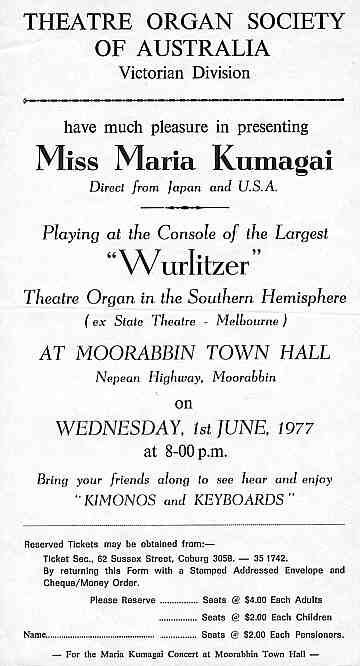
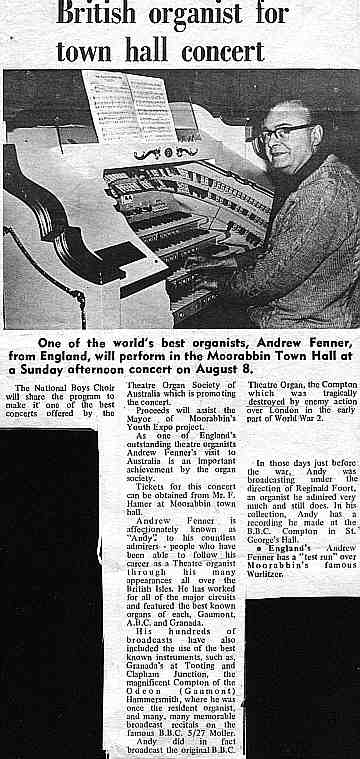
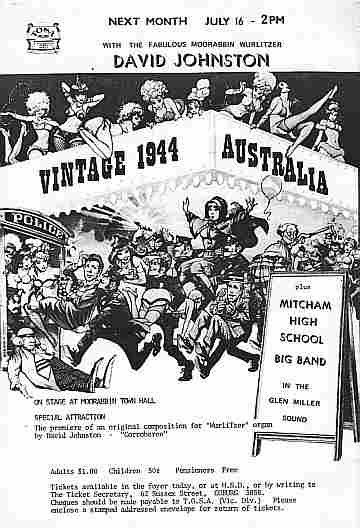
In April, 1972, additional grilles were installed, so that the organ's sound could be better heard at the front of the hall.[Vox, January, 1972, p. 8] Despite its magnificently rich ensemble sound, the need was felt for a more fiery and penetrating tone colour to provide "brass" at times. Accordingly, it was decided to commission the construction by Schopp in America of a replica Wurlitzer Posthorn rank. This was installed initially on the Krumet chest, and unveiled at a special "benefit" concert on 27 March, 1974, at which organists Tony Fenelon, John Atwell and David Johnston gave their services free of charge so that the cost of the rank could be funded from the proceeds of the concert. [Vox, February, 1974, p. 4] For the next five years, the Krumet pipes were silent, but in April, 1979, a new chest, built and donated by Ed Titley, was installed for the Posthorn, thus enabling the Krumet pipes to be replaced on their chest. The Posthorn rank was given a separate regulator, taken from the Chrysoglott, the latter having had a new regulator built for it by Julien Arnold. [Vox, April, 1979, pp. 8-9]
The organ has recently undergone a major overhaul by the TOSA crew, led by Julein Arnold, it being some thirty years since it was installed.
Future plans are to bring the organ's size to 25 ranks with the addition of Oboe Horn, Solo String Céleste and a second Tibia Clausa (to go in the Main chamber).